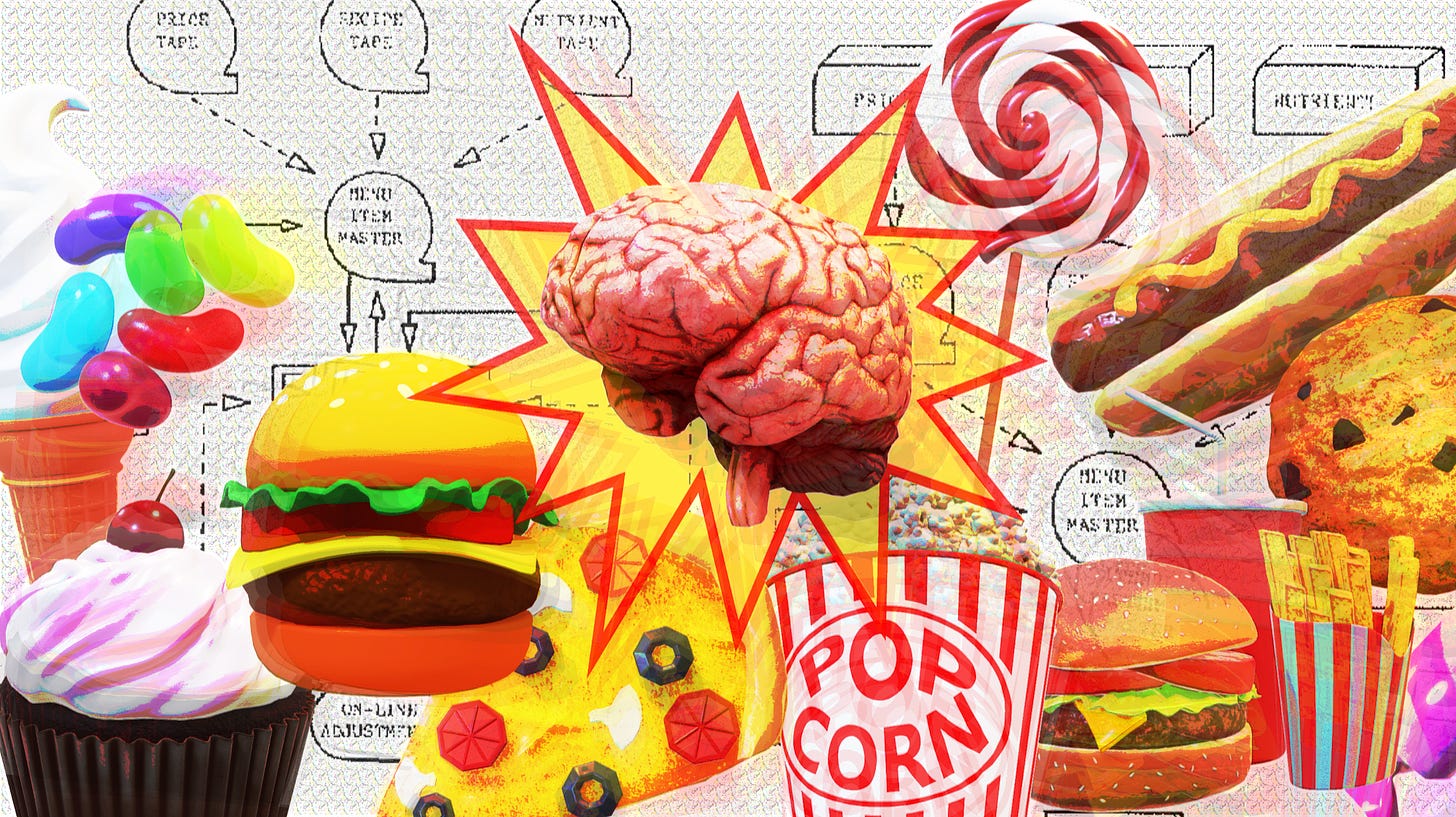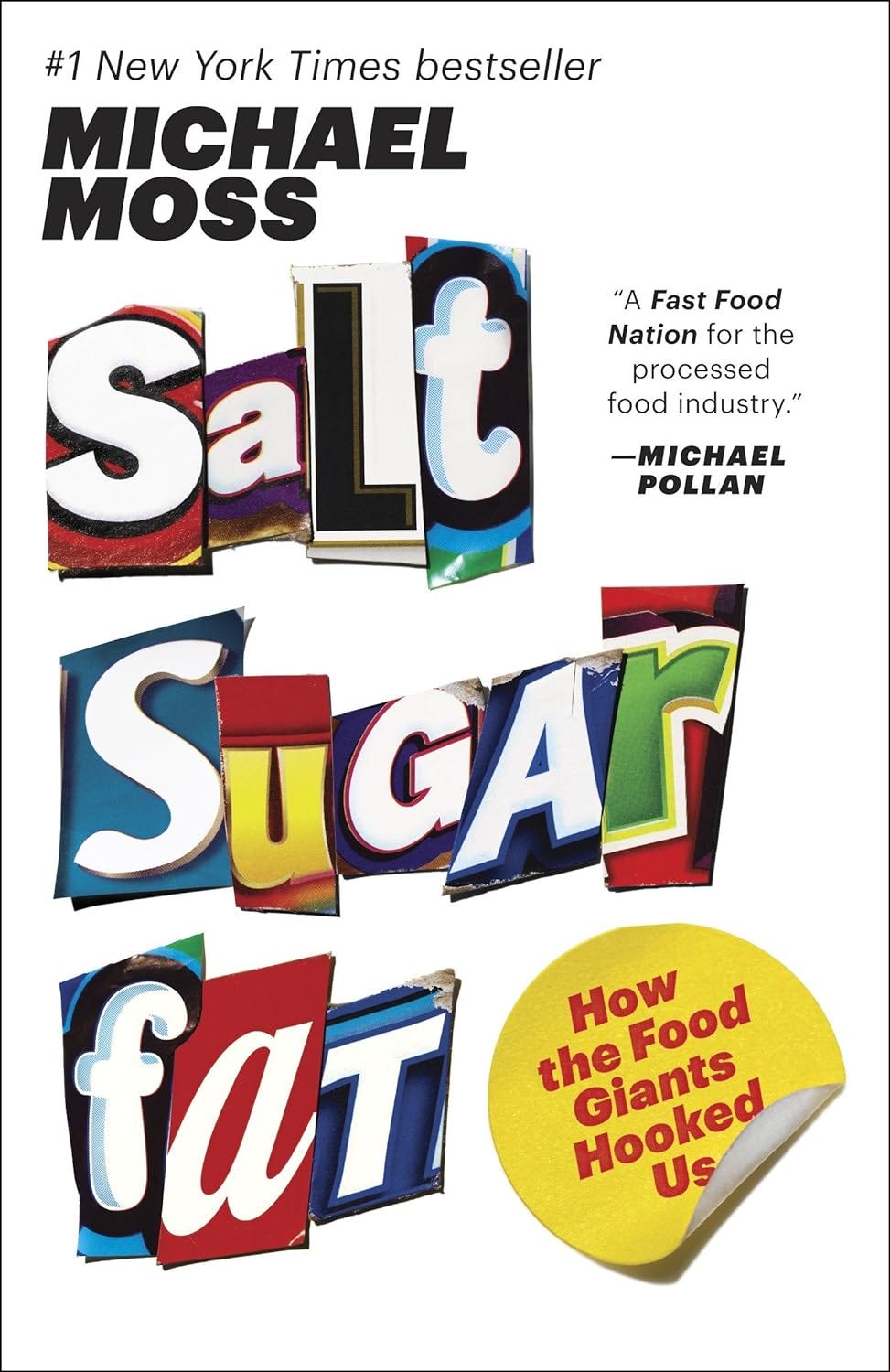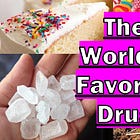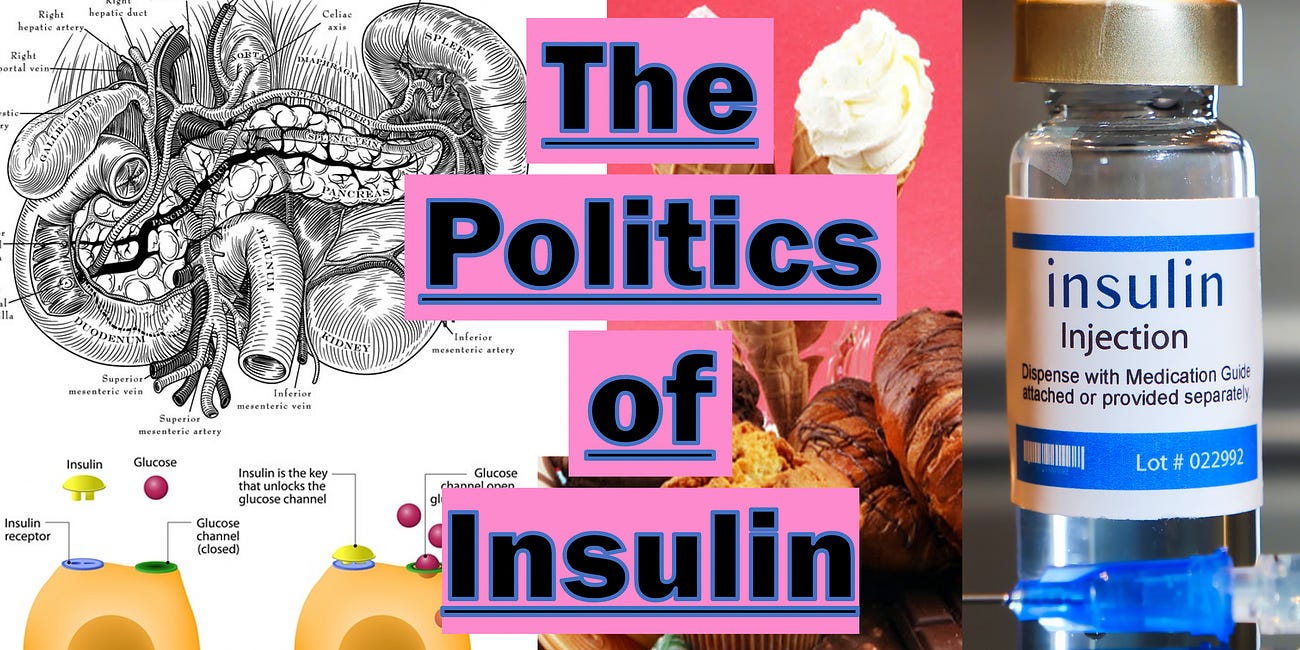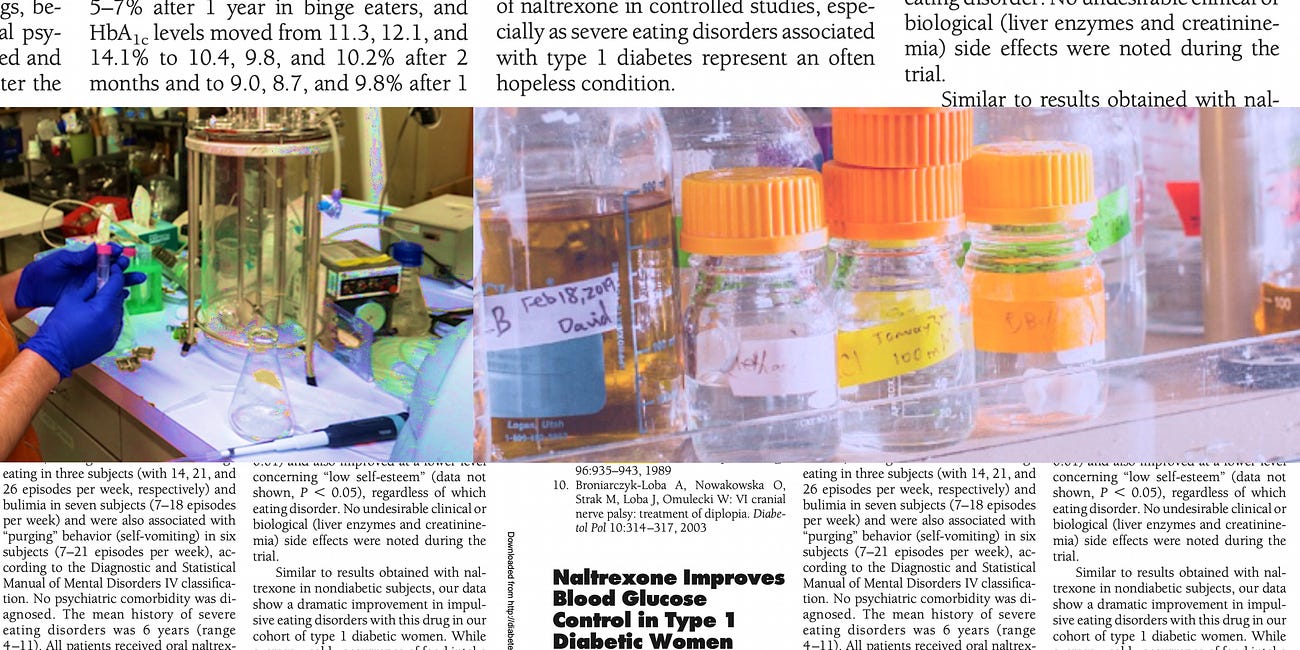The “Bliss Point”
From the military to your dinner plate
The following is an excerpt from p. 106-108 of Chapter 2, “Sugar is the Knife: The World’s Favorite Drug” from my book, Drugism (2022):
[Note: this excerpt picks up where “The Pepsi President” left off.]
Is sugar really our drug of choice? Or is it rather, one that has been pushed upon us? Do we consume so much sugar because we want to, or because governments and corporations want us to?
The ambiguity between consumer choice and corporate manipulation is nowhere more apparent than in the case of the bliss point. The bliss point is a ratio of salt, sugar, and fat which has been mathematically calculated to produce pleasure and stimulate the appetite. Some readers may have heard of it. Michael Moss spends much of his book Salt Sugar Fat discussing the bliss point and its creation.
To understand the bliss point, we must look to the military, for that is where it began. Specifically, the US Army, in the year 1972. That is when Howard Moscowitz and Joseph Balintfy calculated the bliss point in their quest to create appetizing food for soldiers. Moscowitz himself came from a family with a history of diabetes. After obtaining a doctoral degree at Harvard, he pursued a PhD, where his thesis focused on “human taste.”[i]
Harvard has historically acted as a recruiting ground for the military and intelligence community. It should be no surprise then, that after obtaining degrees from Harvard, Moscowitz was recruited into the military. He was hired within a few months of his graduation, in 1969. In the Army, Moscowitz worked with Joseph Balintfy, a professor at the University of Massachusetts who pioneered the application of computers in food distribution.[iii] (Balintfy obtained his doctorate from Johns Hopkins University on a scholarship from the Rockefellers. Interesting, no?)
It was while working for the Army that Moscowitz and Balintfy were given the task of designing food that would stimulate soldiers to eat more. The military had long had problems with its food rations. Much of the food given to troops was not particularly appetizing. Moscowitz and Balintfy worked to find a formula that would ensure continuous consumption of food, thereby allowing troops to enjoy the food more and stay more nourished in combat zones. The formula they devised is what came to be known as the bliss point.
After his time in the military, Moscowitz was hired by processed food companies like McCormick, Dr. Pepper, and others.[iv] Using the bliss point formula designed for soldiers, Moscowitz helped these companies tweak their own recipes. Now, commonly available foods like soda, chips, and even spices, are formulated with the bliss point, which, rather than help troops eat more food, simply helps consumers keep munching. The end results are somewhat similar, though: stimulation of the US economy, and death.
When asked by Moss about the ethical implications of his research, Moscowitz replied, “there’s no moral issue for me.” Moscowitz insists that when he worked for the military, he “didn’t have the luxury of being a moral creature.”[v]
I also cannot help but notice that Moscowitz developed the bliss point at around roughly the same time that the Controlled Substances Act (CSA) was passed. It was a decisive time for US drug policy. Salt and sugar were enshrined via the bliss point and, simultaneously, opioids and tryptamines were demonized via the CSA. The result of these events has been an enormous increase in salt- and sugar-drenched food and the simultaneous criminalization of people who seek dopamine through other means.
The bliss point’s success vitally depends on sugar, or similarly sweet ingredients. But sugar has other functions in food manufacture beyond bliss. It adds bulk, texture, and crystallization to candy, baked goods, and other food/drugs.[vi] By the time Moscowitz developed the bliss point, sugar content was already on the rise, and had been for generations. Predictably, the bliss point further catalyzed this trend.
Consumers, however, became increasingly concerned about the effects of sugar in the 1970s. Corporations responded to this concern by developing substances to use in place of sugar. These ingredients, like high fructose corn syrup and sorbitol, allow companies to market their products as “sugar free.”
A similar dynamic occurred in the popularization of heroin, which was originally marketed legally as an alternative to opium and morphine. A plethora of products containing heroin were sold legally throughout the 19th and early 20th century, many of them marketed as “morphine free” or even as “cures” for morphine habits. The modern-day abundance of processed foods labeled “sugar free” which nonetheless contain any number of sweeteners is not so different.
Thus it was in the search for sugar alternatives that compounds like high fructose corn syrup and sorbitol were popularized.[vii] And food companies made many more moves to keep up with consumers’ growing weariness of sugar. Kellogg’s, for example, rebranded their “Sugar Frosted Flakes” as “Frosted Flakes,” which are around to this day and still contain (quite a bit of) sugar. They later partnered with General Mills to create the “Flavor Benefits Committee,” intended to produce research which would generate media acceptance of sugar, salt, etc.[viii] Kellogg’s even ran a false campaign claiming that Frosted Mini-Wheats improved children’s attentiveness in school. It was a blatant lie, concocted by biased research “commissioned and paid for by Kellogg.”[ix]
Behind the scenes at Dr. Pepper, the company’s executives refer to their customers as “users,” mirroring the vocabulary of drug use.[x] Coca-Cola divides their customers into “users” and “heavy users.” And, as former Coca-Cola executive Jeffrey Dunn explained to Moss, many of the people responsible for such issues sincerely “believe they are doing the right things.”[xi]
It has since dawned on many, however, that incentivizing sugar consumption for profit produces inconvenient, even tragic, consequences. This is as true of sugar as it is any other drug. Some realized this generations ago.


